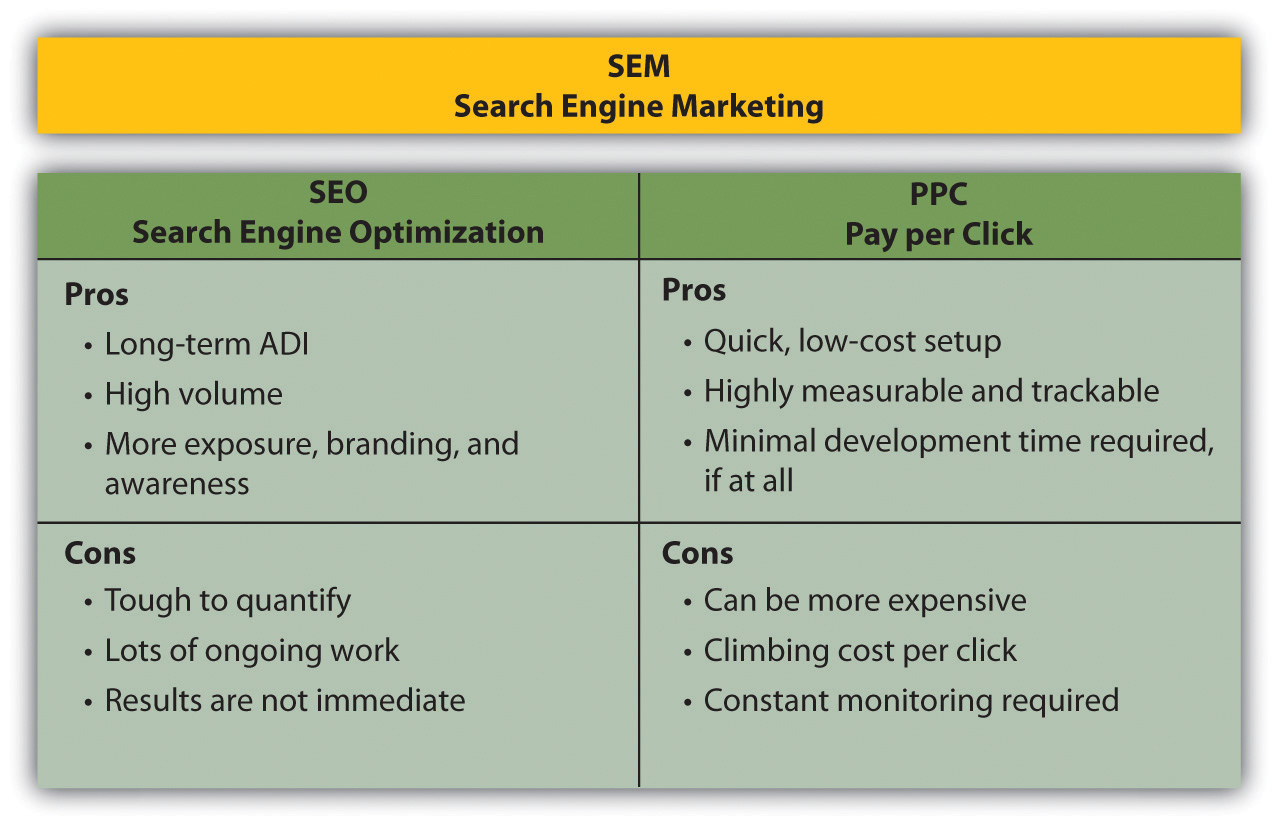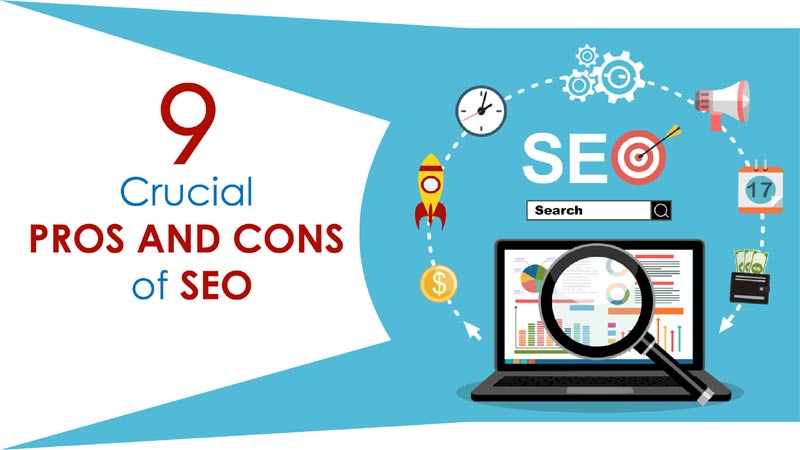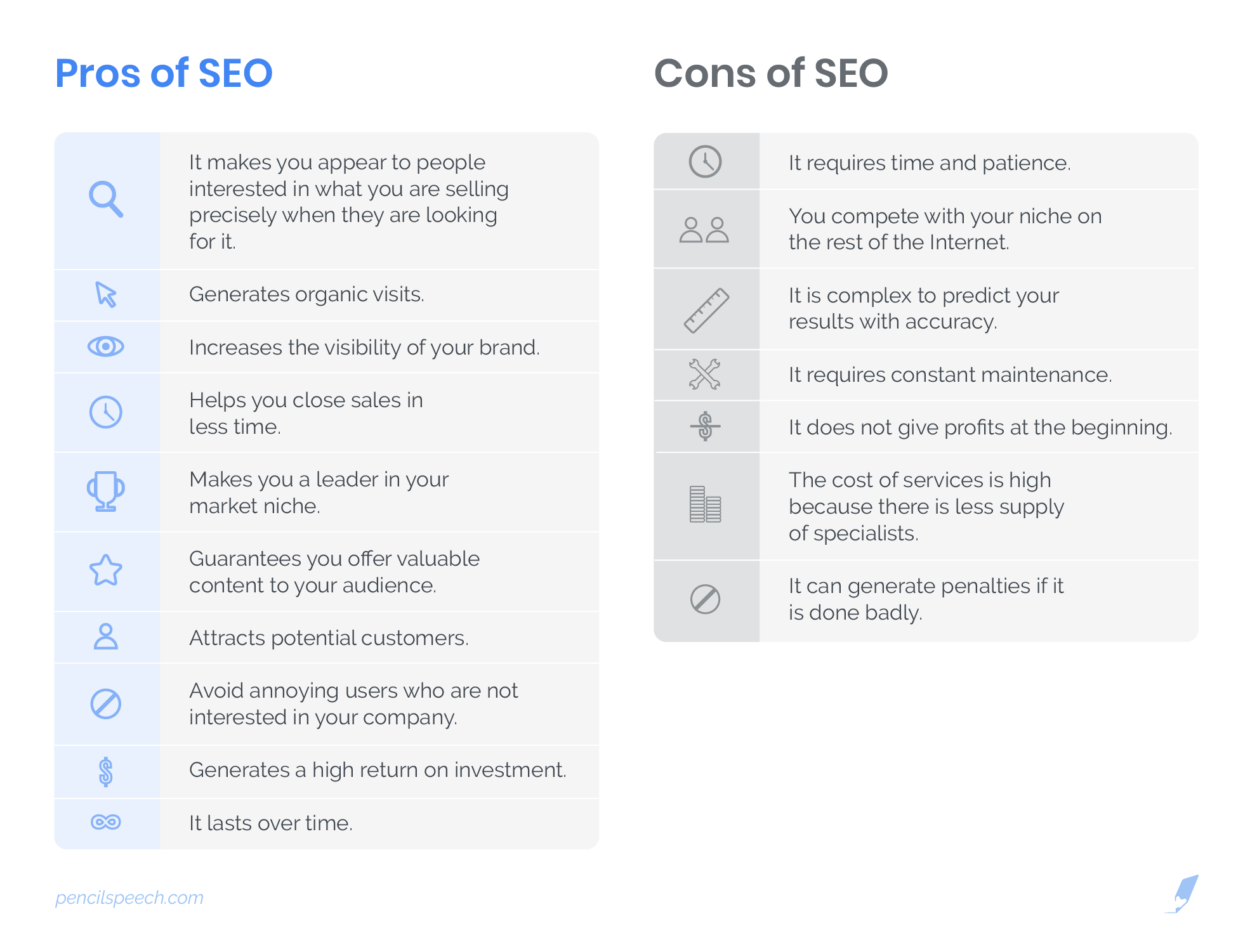**Pros and Cons of Search Engine Marketing**: Pros: SEM boosts website visibility and attracts targeted traffic. Cons: It can be costly and requires continuous management.
**** Search Engine Marketing (SEM) is a powerful digital marketing strategy. It involves using paid advertisements to increase a website’s visibility on search engine results pages (SERPs). Businesses benefit from targeted traffic and rapid results. SEM allows for precise audience targeting through keywords.
Advertisers bid on keywords that potential customers might use. This ensures ads appear at the right moment. Despite its advantages, SEM can be expensive. Continuous monitoring and optimization are necessary to maintain effectiveness. Small businesses might find this challenging. Proper management and a well-allocated budget are crucial. SEM remains a vital tool for businesses aiming to enhance online presence.
Introduction To Search Engine Marketing
Search Engine Marketing (SEM) is a powerful strategy in digital marketing. It helps businesses gain visibility and drive traffic to their websites. This blog post will explore the pros and cons of Search Engine Marketing. But first, let’s understand what SEM is and its importance in the digital marketing world.
What Is Sem?
SEM stands for Search Engine Marketing. It involves promoting websites by increasing their visibility in search engine results. This is achieved primarily through paid advertising. SEM can include both Search Engine Optimization (SEO) and paid search ads.
Paid search ads are also known as Pay-Per-Click (PPC) ads. In SEM, businesses bid on keywords that users type into search engines. When a user searches for those keywords, the ads appear in the search results.
Importance In Digital Marketing
SEM is crucial in digital marketing for several reasons:
- Immediate Visibility: SEM provides instant visibility in search engines.
- Targeted Audience: It allows businesses to target specific keywords and demographics.
- Measurable Results: SEM campaigns provide detailed metrics and analytics.
- Cost Control: Businesses can control their ad spend and budget.
- Brand Awareness: SEM helps in building brand awareness quickly.
Below is a table summarizing the key advantages and disadvantages of SEM:
| Pros | Cons |
|---|---|
| Immediate results | Can be expensive |
| Targeted advertising | Requires continuous investment |
| Measurable performance | High competition for keywords |
| Flexible budget options | Click fraud risk |
| Increases brand awareness | Requires expertise |
Understanding SEM and its importance helps businesses make informed decisions. It ensures they maximize their marketing efforts and achieve their goals effectively.
Advantages Of Sem
Search Engine Marketing (SEM) offers a plethora of benefits for businesses. SEM can help drive traffic, increase visibility, and generate leads. Here, we explore the key advantages of SEM that make it a go-to strategy for many marketers.
Immediate Results
One of the biggest advantages of SEM is that it delivers immediate results. Unlike SEO, which can take months, SEM can provide quick visibility. As soon as your campaign goes live, your ad appears in search results.
Immediate results mean you can start seeing traffic and conversions quickly. This rapid feedback allows you to adjust your strategy in real-time. You can make data-driven decisions to improve performance.
Targeted Advertising
SEM allows for highly targeted advertising. You can target users based on keywords, location, device, and even time of day. This ensures your ads reach the right audience.
Using targeted advertising helps maximize your return on investment (ROI). You only pay for clicks from users who are likely interested in your product. This reduces wasted ad spend and increases conversion rates.
Here’s a quick comparison of Targeted Advertising benefits:
| Targeting Method | Benefit |
|---|---|
| Keywords | Reach users searching for specific terms |
| Location | Advertise to users in specific geographical areas |
| Device | Optimize ads for mobile, desktop, or tablet |
| Time of Day | Show ads during peak engagement hours |
By leveraging these targeting methods, businesses can create highly effective campaigns. Targeted advertising ensures that marketing budgets are spent efficiently.
Cost-effectiveness
Search Engine Marketing (SEM) is a powerful tool for online visibility. One key benefit is cost-effectiveness. SEM allows businesses to reach targeted audiences efficiently without overspending. Let’s explore how SEM offers budget flexibility and a strong return on investment.
Budget Flexibility
SEM campaigns can fit any budget. You can start with a small amount and scale up as needed. This flexibility is ideal for small businesses. Adjusting your budget is simple and quick. This makes SEM accessible for everyone.
Here’s a quick comparison of SEM budget flexibility:
| Budget Size | Flexibility |
|---|---|
| Small | High |
| Medium | Medium |
| Large | High |
Return On Investment
SEM often delivers a strong return on investment (ROI). You only pay for clicks, not for impressions. This ensures you’re getting value for your money. Tracking and measuring ROI is straightforward with SEM tools. This clarity helps in making informed decisions.
Key benefits of SEM ROI include:
- Pay-per-click model
- Easy performance tracking
- Higher conversion rates
Brand Awareness
Brand awareness is crucial for any business aiming to grow its customer base. Search Engine Marketing (SEM) can significantly enhance a brand’s visibility. This section explores the pros and cons of SEM in building brand awareness.
Visibility Boost
SEM offers a visibility boost by placing your ads at the top of search results. This ensures that potential customers see your brand first. Increased visibility can lead to more clicks and visits to your website.
Consider the following pros and cons:
| Pros | Cons |
|---|---|
| Immediate visibility | Can be costly |
| Targeted audience reach | Requires ongoing investment |
Trust And Credibility
Appearing in search results builds trust and credibility for your brand. Users often trust brands that appear at the top of search results.
Here are some advantages and disadvantages:
- Pros: Establishes authority, attracts quality leads.
- Cons: Short-lived if not maintained, high competition.
Maintaining a top spot in search results can be challenging. Consistency is key to building long-term trust and credibility.
Challenges Of Sem
Search Engine Marketing (SEM) offers businesses immense growth opportunities. But it also comes with several challenges. Understanding these challenges helps in making informed decisions. Here, we discuss some key challenges of SEM.
High Competition
SEM is a competitive field. Many businesses invest heavily in it. This high competition can make it hard to stand out. Popular keywords attract many advertisers. This leads to a bidding war. Small businesses often struggle in such scenarios. They may not have the budget to compete. A well-planned strategy is needed to overcome this hurdle.
Costly Keywords
Some keywords are very expensive. Their high cost is due to high demand. Businesses often bid aggressively for these keywords. This can quickly drain a marketing budget. Small businesses must be cautious. They need to choose their keywords wisely. Using long-tail keywords can be more cost-effective.
| Keyword Type | Cost | Competition |
|---|---|---|
| Short-Tail | High | High |
| Long-Tail | Low | Low |
Long-tail keywords are longer phrases. They have less competition. They are also more specific. This specificity can lead to higher conversion rates. They are also cheaper. This makes them a good choice for small businesses.

Credit: saylordotorg.github.io
Technical Aspects
Search Engine Marketing (SEM) offers many opportunities for businesses to grow. Yet, understanding its technical aspects is crucial. This section explores the learning curve and essential tools and platforms.
Learning Curve
The learning curve for SEM can be steep. Beginners need to grasp various concepts. Keywords, bidding strategies, and ad copy are just the beginning.
It involves understanding complex terms and metrics. Terms such as CTR (Click-Through Rate) and CPC (Cost Per Click) are vital. Mastering these takes time and practice.
Learning about Quality Score and Ad Rank is essential. These metrics affect your ad placements. High scores mean better visibility and lower costs.
Newcomers may find it overwhelming. But, numerous resources and tutorials are available. Investing time in learning pays off in the long run.
Tools And Platforms
Various tools and platforms make SEM more manageable. Google Ads is the most popular platform. It offers a comprehensive suite of features.
Another useful tool is Google Analytics. It helps track and analyze campaign performance. Combining these tools provides valuable insights.
Other platforms like Bing Ads also offer unique advantages. They can help reach different audiences.
Here is a table summarizing key tools:
| Tool | Purpose |
|---|---|
| Google Ads | Ad creation and management |
| Google Analytics | Performance tracking |
| Bing Ads | Alternative ad platform |
Using the right tools simplifies SEM tasks. They help with keyword research, ad creation, and performance tracking.
Automation tools can also save time. They manage bids and budget allocation efficiently.
Here are some popular automation tools:
- Google Ads Editor
- SEMrush
- Ahrefs
Choosing the right tools and platforms is critical. They streamline the SEM process and improve results.
Best Practices
Search Engine Marketing (SEM) is a powerful tool for businesses. To maximize its potential, follow these best practices. They help in achieving better results and efficient use of resources. Let’s explore some key practices in SEM.
Effective Keyword Research
Keyword research is the foundation of SEM. Identifying the right keywords can make or break your campaign. Use tools like Google Keyword Planner and SEMrush.
- Identify relevant keywords: Focus on terms your audience searches for.
- Analyze keyword competition: Avoid highly competitive keywords if on a budget.
- Use long-tail keywords: These are more specific and less competitive.
Creating a list of target keywords is essential. Group them by relevancy and intent. This helps in creating targeted ad campaigns. Regularly update your keyword list to stay relevant.
Performance Monitoring
Continuous performance monitoring ensures your SEM campaigns are effective. Use tools like Google Analytics and Bing Ads. Monitor key metrics like:
| Metric | Importance |
|---|---|
| Click-Through Rate (CTR) | Measures ad effectiveness |
| Conversion Rate | Tracks goal completions |
| Cost Per Click (CPC) | Ensures budget efficiency |
Regularly review and adjust your campaigns based on these metrics. A/B testing is crucial. Test different ad copies and landing pages to see what works best. Make data-driven decisions to optimize performance.

Credit: digitalcatalyst.in

Credit: pencilspeech.com
Frequently Asked Questions
What Are The Advantages And Disadvantages Of Search Engines?
Search engines offer quick information access and vast resources, enhancing research efficiency. They may present biased results and privacy concerns.
What Are The Disadvantages Of Search Advertising?
Search advertising can be expensive, especially for competitive keywords. Click fraud can waste your budget. Ads may be ignored by users.
What Are The Pros And Cons Of Search Engine Marketing?
Pros: Increases visibility, drives targeted traffic, offers measurable results, and enhances brand awareness. Cons: Can be costly, requires continuous optimization, faces competition, and risks click fraud.
What Are The Pros And Cons Of Seo?
SEO boosts organic traffic, increases brand visibility, and builds credibility. It’s cost-effective with long-term benefits. Cons include time consumption, constant algorithm changes, and competitive nature. Results are not immediate.
What Is Search Engine Marketing?
Search Engine Marketing (SEM) is a digital strategy to increase website visibility through paid ads on search engines.
Conclusion
Search Engine Marketing offers numerous benefits, such as increased visibility and targeted advertising. However, it also has drawbacks like high costs and competitiveness. Weighing these pros and cons can help businesses make informed decisions. Ultimately, the right strategy depends on individual goals and budget. Choose wisely to maximize your online presence.


